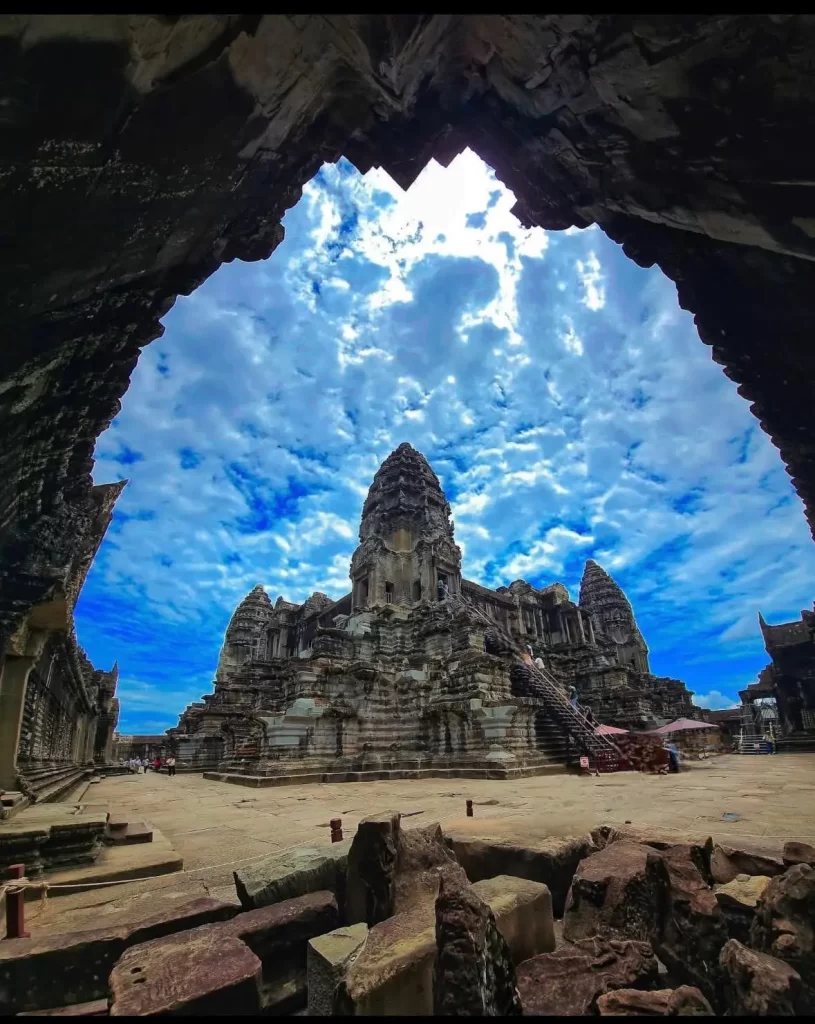Angkor Wat Temple, located in Siem Reap, Cambodia, is one of the most remarkable architectural achievements in the world. Often described as the soul of Cambodia, this breathtaking complex attracts millions of visitors each year. Beyond its beauty, Angkor Wat is layered with history, symbolism, and mystery. Here are 50 facts about Angkor Wat Temple that reveal why it is considered one of humanity’s greatest treasures.
Historical Background
- Built in the 12th century by King Suryavarman II, Angkor Wat originally served as a Hindu temple dedicated to Vishnu.
- It later transitioned into a Buddhist temple in the 14th century, and it remains a major site of Buddhist worship today.
- Angkor Wat was designed to represent Mount Meru, the center of the universe in Hindu and Buddhist cosmology.
- Unlike most Khmer temples, Angkor Wat faces west, symbolizing Vishnu and perhaps also associated with funerary practices.
- The temple survived centuries of political turmoil and remains largely intact, a rarity among ancient monuments.

Architectural Wonders
- Angkor Wat is the largest religious monument in the world, covering about 162 hectares.
- Its central tower rises to a height of 65 meters (213 feet), surrounded by four smaller towers.
- The temple is famous for its bas-reliefs, stretching over 800 meters, depicting Hindu epics like the Mahabharata and Ramayana.
- The moat surrounding Angkor Wat is nearly 200 meters wide and acts as both a spiritual boundary and a protective barrier.
- The sandstone blocks used in construction were transported from quarries more than 50 kilometers away.
Symbolism and Meaning
- The five central towers symbolize the five peaks of Mount Meru.
- The outer walls represent the mountains at the edge of the world in Hindu cosmology.
- The moat is symbolic of the cosmic ocean that surrounds the earth.
- Many bas-reliefs were carved with astonishing detail, representing heavenly dancers called Apsaras.
- Every angle of the temple incorporates astronomical alignments with the sun and moon.
Rediscovery and Preservation
- Although never completely abandoned, Angkor Wat was “rediscovered” by the West in the 19th century by French explorer Henri Mouhot.
- Today, Angkor Wat is a UNESCO World Heritage Site since 1992.
- Restoration projects are ongoing, supported by international organizations.
- Angkor Wat has become a national symbol of Cambodia, even appearing on the country’s flag.
- Despite heavy tourism, conservation efforts aim to balance preservation with accessibility.
Cultural Significance
- Angkor Wat is considered one of the Seven Wonders of the Medieval World.
- The temple complex plays a central role in Cambodian festivals and Buddhist rituals.
- Cambodian monks often visit Angkor Wat for meditation and ceremonies.
- The temple attracts more than 2.5 million visitors annually.
- It has inspired literature, films, and art across the globe.
Fascinating Details
- Some carvings depict thousands of warriors, elephants, and celestial beings.
- Over 3,000 Apsaras are carved into the walls of the temple.
- Scholars believe over 300,000 workers and 6,000 elephants were involved in its construction.
- The temple stones are bonded without mortar, showcasing incredible precision engineering.
- Intricate carvings reveal scenes of daily Khmer life from centuries ago.
Angkor Wat in Modern Times
- The temple survived conflicts during the Khmer Rouge era, though it faced damage.
- Cambodia sees Angkor Wat as a symbol of resilience and pride.
- Angkor Wat has been featured in global media, including films like Tomb Raider.
- The temple is central to Cambodia’s tourism industry, generating significant revenue.
- It remains a pilgrimage site for Buddhists worldwide.
Mysteries and Myths
- Some scholars believe Angkor Wat’s layout reflects constellations and celestial events.
- Legends say the temple was built in a single night by a divine architect.
- Researchers still debate how massive stones were transported without modern tools.
- Certain bas-reliefs may encode ancient astronomical knowledge.
- Hidden chambers are believed to exist within the complex, yet to be fully explored.
Angkor Wat’s Global Legacy
- Angkor Wat is a UNESCO cultural icon, comparable to the Pyramids of Giza and Machu Picchu.
- Scholars from around the world continue to study its engineering and artistic brilliance.
- It is considered the largest religious structure ever built.
- Its architecture influenced later temples throughout Southeast Asia.
- Angkor Wat is one of the most photographed landmarks on Earth.
Tourist Experience
- Sunrise at Angkor Wat is regarded as one of the most beautiful views in the world.
- Visitors can climb the central tower for panoramic views of the site.
- The surrounding Angkor Archaeological Park contains hundreds of other temples.
- Exploring Angkor Wat can take a full day due to its vastness.
- Many travelers describe the site as life-changing, blending spirituality with history.
Conclusion
Angkor Wat Temple is more than a historical monument; it is a living reminder of Cambodia’s golden age and its enduring spiritual legacy. From its breathtaking architecture to its cultural symbolism, Angkor Wat continues to inspire awe across the world. These 50 Angkor Wat Temple facts highlight why it remains one of the greatest human achievements and a must-visit destination.
